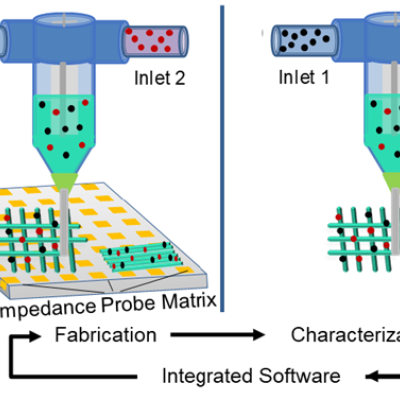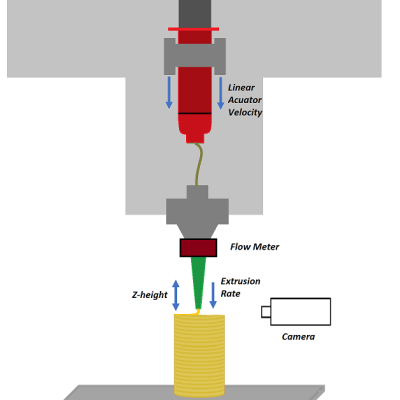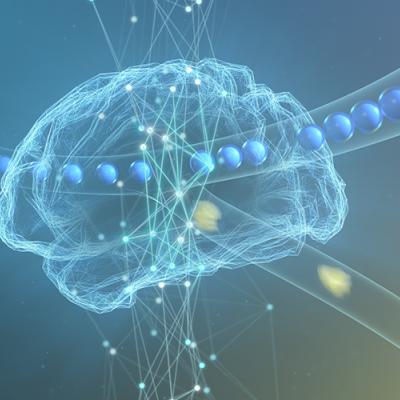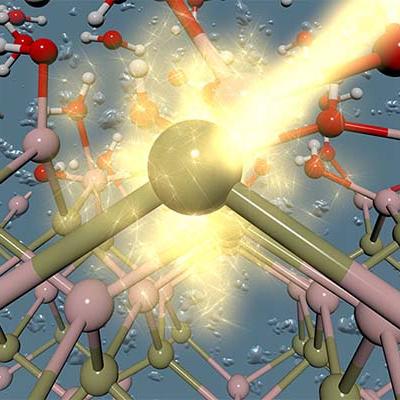The platform has three major components:
(1) active-mixing direct-ink-write
(2) in situ characterization substrates or probes
(3) active learning experimental planning system.
Keywords
- Show all (116)
- Additive Manufacturing (54)
- Synthesis and Processing (20)
- 3D Printing (8)
- Materials for Energy Products (6)
- Material Design (4)
- Microfabrication (3)
- Additively Manufactured (AM) Optics (2)
- Manufacturing Improvements (2)
- Membranes (2)
- Rare Earth Elements (REEs) (2)
- Volumetric Additive Manufacturing (2)
- Direct Air Capture (1)
- Electric Grid (1)
- Inertial Confinement Fusion (ICF) (1)
- Inertial Fusion Energy (IFE) (1)
- Magnet Compositions (1)
- Manufacturing Simulation (1)
- Material Characterization (1)
- Precision Engineering (1)
- (-) Manufacturing Automation (3)
Image

Image

Livermore researchers have developed a method for implementing closed-loop control in extrusion printing processes by means of novel sensing, machine learning, and optimal control algorithms for the optimization of printing parameters and controllability. The system includes a suite of sensors, including cameras, voltage and current meters, scales, etc., that provide in-situ process monitoring…
Image

LLNL researchers have developed a system that relies on machine learning to monitor microfluidic devices. The system includes (at least) a microfluidic device, sensor(s), and a local network computer. The system could also include a camera that takes real-time images of channel(s) within an operating microfluidic device. A subset of these images can be used to train/teach a machine learning…
Image

Dubbed the "LLNL Chemical Prism", the LLNL system has use wherever there is a need to separate components of a fluid. A few examples include:
- Chemical detection for known and previously unknown chemicals or substances
- Separation of biomolecules from a cellular extract
- Fractionation of a complex mixture of hydrocarbons
- Forensic analysis of…

